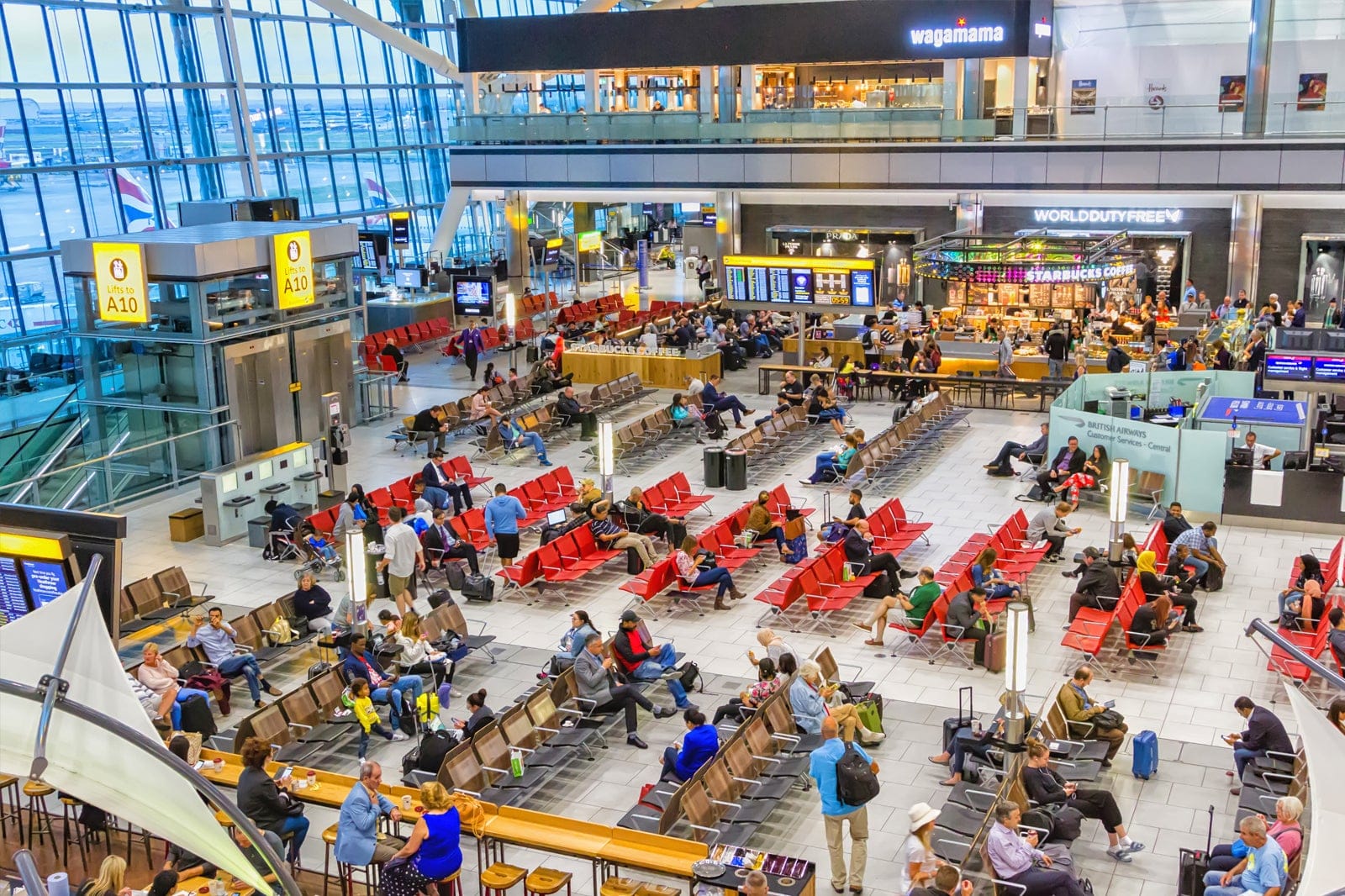421
The largest airport in Europe is located in London. London Heathrow is an important hub for European and global air traffic
The largest airport in Europe
The largest airport in Europe is London Heathrow Airport. It is not only the busiest airport on the continent, but also one of the most important hubs in global air traffic.
- Passenger numbers: Heathrow is the busiest airport in Europe in terms of passenger numbers. In 2023, over 79 million passengers used the airport.
- Destinations: The airport offers connections to over 180 destinations in more than 90 countries, making it a central hub for international air traffic.
- Terminals: Heathrow has five terminals (Terminal 1 was closed in 2015). Terminals 2 and 3 mainly serve international flights, Terminal 4 is mainly for long-haul flights and Terminal 5, the largest terminal, mainly serves British Airways flights.
- Take-off and landing runways: London Airport has two parallel runways that can handle intensive air traffic. There are plans to build a third runway to further increase the airport’s capacity.
Interesting facts about Europe’s largest airport
London Heathrow Airport is a major gateway to Europe and a key element of international air travel. Its history and future plans reflect the dynamics and challenges of modern air travel.
- Early years: The airport was officially opened in 1946, but its origins date back to the 1920s when the site was used as an airfield for military purposes. Originally called “London Airport”, the airport was later renamed “London Heathrow” after the hamlet of Heathrow, which had to make way for the construction of the airport.
- 1950s-1960s: In the decades following its opening, Heathrow experienced rapid growth. The first two terminals were built: Terminal 1 (1968) and Terminal 2 (1955).
- Services and facilities: Heathrow offers a wide range of amenities for passengers, including luxury lounges, duty-free stores, restaurants, hotels and conference facilities. The airport has excellent public transport links, including the London Tube (Piccadilly Line), the Heathrow Express, national train services and numerous bus and cab services.
- Climate protection: The airport is committed to reducing its CO2 emissions and is increasingly focusing on sustainable practices such as improving energy efficiency and promoting more environmentally friendly means of transportation.
- Noise protection: Noise reduction measures, such as noise barriers and the introduction of quieter aircraft technologies, are also an important part of the airport’s long-term strategy.
